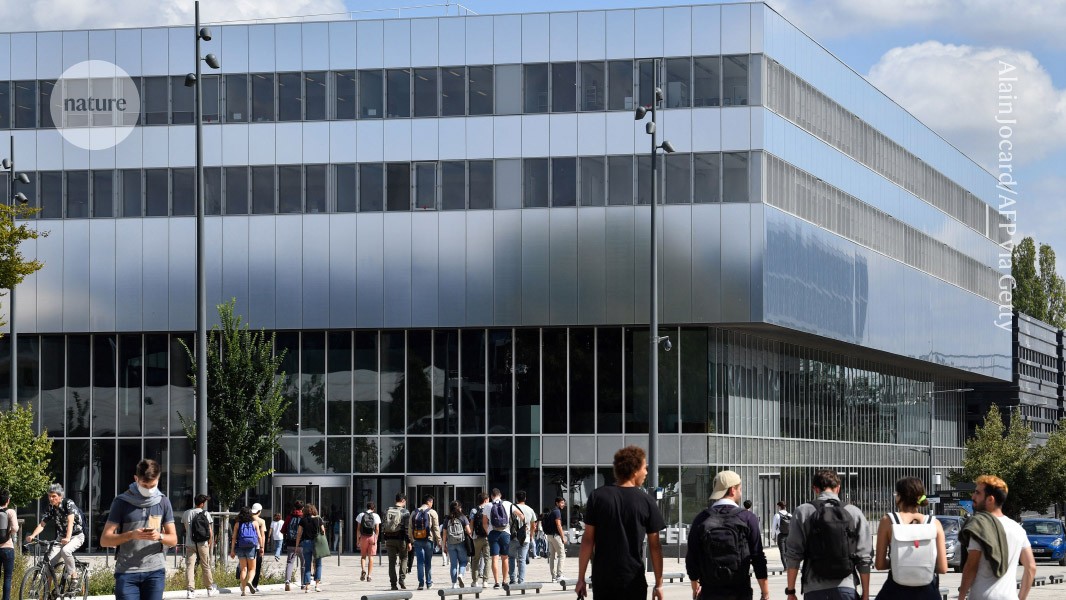Jiang, L. et al. De novo computational design of retro-aldol enzymes. Science 319, 1387–1391 (2008).
Rothlisberger, D. et al. Kemp elimination catalysts by computational enzyme design. Nature 453, 190–195 (2008).
Yeh, H. W. et al. Red-shifted luciferase–luciferin pairs for enhanced bioluminescence imaging. Nat. Methods 14, 971–974 (2017).
Love, A. C. & Prescher, J. A. Seeing (and using) the light: recent developments in bioluminescence technology. Cell Chem. Biol. 27, 904–920 (2020).
Syed, A. J. & Anderson, J. C. Applications of bioluminescence in biotechnology and beyond. Chem. Soc. Rev. 50, 5668–5705 (2021).
Yeh, H.-W. & Ai, H.-W. Development and applications of bioluminescent and chemiluminescent reporters and biosensors. Annu. Rev. Anal. Chem. 12, 129–150 (2019).
Zambito, G., Chawda, C. & Mezzanotte, L. Emerging tools for bioluminescence imaging. Curr. Opin. Chem. Biol. 63, 86–94 (2021).
Markova, S. V., Larionova, M. D. & Vysotski, E. S. Shining light on the secreted luciferases of marine copepods: current knowledge and applications. Photochem. Photobiol. 95, 705–721 (2019).
Jiang, T. Y., Du, L. P. & Li, M. Y. Lighting up bioluminescence with coelenterazine: strategies and applications. Photochem. Photobiol. Sci. 15, 466–480 (2016).
Michelini, E. et al. Spectral-resolved gene technology for multiplexed bioluminescence and high-content screening. Anal. Chem. 80, 260–267 (2008).
Rathbun, C. M. et al. Parallel screening for rapid identification of orthogonal bioluminescent tools. ACS Cent. Sci. 3, 1254–1261 (2017).
Yeh, H.-W., Wu, T., Chen, M. & Ai, H.-W. Identification of factors complicating bioluminescence imaging. Biochemistry 58, 1689–1697 (2019).
Su, Y. C. et al. Novel NanoLuc substrates enable bright two-population bioluminescence imaging in animals. Nat. Methods 17, 852–860 (2020).
Lombardi, A., Pirro, F., Maglio, O., Chino, M. & DeGrado, W. F. De novo design of four-helix bundle metalloproteins: one scaffold, diverse reactivities. Acc. Chem. Res. 52, 1148–1159 (2019).
Chino, M. et al. Artificial diiron enzymes with a de novo designed four‐helix bundle structure. Eur. J. Inorg. Chem. 2015, 3352–3352 (2015).
Basler, S. et al. Efficient Lewis acid catalysis of an abiological reaction in a de novo protein scaffold. Nat. Chem. 13, 231–235 (2021).
Anishchenko, I. et al. De novo protein design by deep network hallucination. Nature 600, 547–552 (2021).
Wang, J. et al. Scaffolding protein functional sites using deep learning. Science 377, 387–394 (2022).
Norn, C. et al. Protein sequence design by conformational landscape optimization. Proc. Natl Acad. Sci. USA. 118, e2017228118 (2021).
Yang, J. Y. et al. Improved protein structure prediction using predicted interresidue orientations. Proc. Natl Acad. Sci. USA 117, 1496–1503 (2020).
Basanta, B. et al. An enumerative algorithm for de novo design of proteins with diverse pocket structures. Proc. Natl Acad. Sci. USA 117, 22135–22145 (2020).
Loening, A. M., Fenn, T. D. & Gambhir, S. S. Crystal structures of the luciferase and green fluorescent protein from Renilla reniformis. J. Mol. Biol. 374, 1017–1028 (2007).
Tomabechi, Y. et al. Crystal structure of nanoKAZ: the mutated 19 kDa component of Oplophorus luciferase catalyzing the bioluminescent reaction with coelenterazine. Biochem. Biophys. Res. Commun. 470, 88–93 (2016).
Wu, N. et al. Solution structure of Gaussia luciferase with five disulfide bonds and identification of a putative coelenterazine binding cavity by heteronuclear NMR. Sci. Rep. 10, 20069 (2020).
Ding, B. W. & Liu, Y. J. Bioluminescence of firefly squid via mechanism of single electron-transfer oxygenation and charge-transfer-induced luminescence. J. Am. Chem. Soc. 139, 1106–1119 (2017).
Isobe, H., Yamanaka, S., Kuramitsu, S. & Yamaguchi, K. Regulation mechanism of spin-orbit coupling in charge-transfer-induced luminescence of imidazopyrazinone derivatives. J. Am. Chem. Soc. 130, 132–149 (2008).
Kondo, H. et al. Substituent effects on the kinetics for the chemiluminescence reaction of 6-arylimidazo[1,2-a]pyrazin-3(7H)-ones (Cypridina luciferin analogues): support for the single electron transfer (SET)-oxygenation mechanism with triplet molecular oxygen. Tetrahedron Lett. 46, 7701–7704 (2005).
Branchini, B. R. et al. Experimental support for a single electron-transfer oxidation mechanism in firefly bioluminescence. J. Am. Chem. Soc. 137, 7592–7595 (2015).
Dou, J. Y. et al. De novo design of a fluorescence-activating β-barrel. Nature 561, 485–491 (2018).
Cao, L. et al. Design of protein-binding proteins from the target structure alone. Nature 605, 551–560 (2022).
Jumper, J. et al. Highly accurate protein structure prediction with AlphaFold. Nature 596, 583–589 (2021).
Dauparas, J. et al. Robust deep learning-based protein sequence design using ProteinMPNN. Science 378, 49–56 (2022).
Yeh, H.-W. et al. ATP-independent bioluminescent reporter variants to improve in vivo imaging. ACS Chem. Biol. 14, 959–965 (2019).
Xiong, Y. et al. Engineered amber-emitting nano luciferase and its use for immunobioluminescence imaging in vivo. J. Am. Chem. Soc. 144, 14101–14111 (2022).
Bhaumik, S. & Gambhir, S. S. Optical imaging of Renilla luciferase reporter gene expression in living mice. Proc. Natl Acad. Sci. USA 99, 377–382 (2002).
Szent-Gyorgyi, C., Ballou, B. T., Dagnal, E. & Bryan, B. Cloning and characterization of new bioluminescent proteins. In Proc. SPIE 3600, Biomedical Imaging: Reporters, Dyes, and Instrumentation (eds. Bornhop, D. J., Contag, C. H. & Sevick-Muraca, E. M.) https://doi.org/10.1117/12.351015 (SPIE, 1999).
Hall, M. P. et al. Engineered luciferase reporter from a deep sea shrimp utilizing a novel imidazopyrazinone substrate. ACS Chem. Biol. 7, 1848–1857 (2012).
Baek, M. et al. Accurate prediction of protein structures and interactions using a three-track neural network. Science 373, 871-+ (2021).
Wicky, B. I. M. et al. Hallucinating symmetric protein assemblies. Science 378, 56–61 (2022).
Giger, L. et al. Evolution of a designed retro-aldolase leads to complete active site remodeling. Nat. Chem. Biol. 9, 494–498 (2013).
Yao, Z. et al. Multiplexed bioluminescence microscopy via phasor analysis. Nat. Methods 19, 893–898 (2022).







More News
France’s research mega-campus faces leadership crisis
Smarty plants? Controversial plant-intelligence studies explored in new book
Hunger on campus: why US PhD students are fighting over food